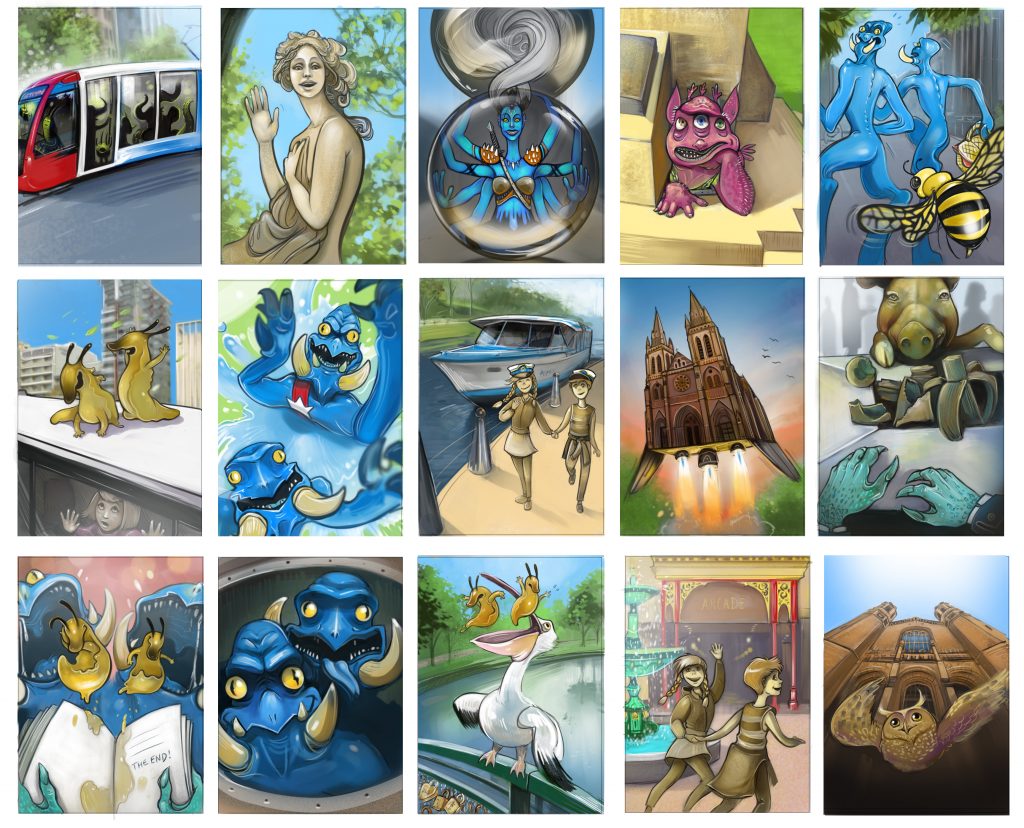Without in-person experiences over the past year, artists, writers, creators, and brands have all had to find new ways to stay connected with audiences. The world has been inundated with new blog content, YouTube videos and channels, a wall of social media noise, and a bunch of new podcast options. All of it, while sometimes creative, just makes for oversaturated digital platforms with underwhelming content that doesn’t really encourage action or empathy from audiences. In fact, these forms of content can be quite passive, which means you’re investing all this time into creating content, but you aren’t really connecting on a deeper, emotional level. You want your audience to respond to your content whether it’s playful, emotional, creative, or action inducing.
So how do you get the public – your audiences – to get excited about your content? You need to find new ways to get them involved. The answer is through interactive storytelling.
Here are four ways you can use to make content and stories more interactive.

Artist Credit: Sarah Boese
1. Choose Your Adventure Experiences
Imagine creating an interactive narrative where there are multiple endings and paths to explore. You can explore themes, causes, and various scenarios all while giving your audience an experience that takes them beyond a video or written word. It gives you the ability to put your audience in the shoes of a specific person. A choose your adventure (CYA) experience can be utilized in so many different ways. For non-profits, you can showcase the stories and challenges that face the people you are trying to help by facing participants with the choices the people you support face every day. For creative writers, you can write exciting stories where your audience is a part of the story itself – literally, as a pirate, a superhero, a private detective, a bounty hunter!
The best part about a CYA is that your audience can experience it multiple times, making different choices along the way to arrive at different outcomes. So if you are looking at a way to monetize your content because you need to replace in-person events, this allows you to reach your audience longer-term in a big long game of what-if!
The Story City platform actually allows you to create CYA in the real world, so sign up to the creator beta waitlist if you’re interested in hearing when the tools go live to creators.
2. Gamification
Gamification simply means adding some sort of action, challenge, or activity to your storytelling. A good example of this is an escape room where you have to solve a series of puzzles and riddles to finally unlock the door to get out.
When it comes to creating interactive storytelling opportunities through gamification, you could consider tying your narrative to a series of puzzles or challenges. This would mean that the next part of the story isn’t unlocked until a certain puzzle has been solved or a challenge has been completed. Consider things like a murder mystery where your audience is the detective trying to solve the murder. Each clue has to be figured out and leads to the next clue – and you can’t skip ahead to the ending first!
The possibilities are endless with gamification when you consider including things like physical challenges like climbing to the top of a play structure so you can “see what happens next in the distance.” Or perhaps you fancy something a little more haunted where your audience has to recite certain words or a rhyme to summon a ghostly visitor. Below are some categories of gamification you could play with:
- Clues/Puzzles: Which need solving before the next story piece is unlocked (puzzles, trivia, multiple choice).
- Games/Find A Thing: Physical activities you get participants to play with: themselves, each other or a ‘character’. Increase awareness & to interact with surroundings.
- Challenges: Climbing to the top of a rock/playground to fetch something. Knocking on or hugging trees, saying Rhymes to lure out creatures etc. Dance Challenge. Doing ‘something’ as part of game play.
- Creation/legacy: Create something to play with or leave behind for others to discover (stick men, bark boats, love heart on a tree, a line carved in a rock etc)

3. Link Your Stories to Physical Locations
The most immersive (and effective!) experiences seamlessly include physical locations that anchor each story to emotions, nostalgia, and all the five senses. This is called locative storytelling. The most powerful and memorable stories in our lives are usually linked to specific places – your first kiss, your biggest accomplishments, graduation, lost a loved one, or even when you first fell in love. The best way to link physical spaces to your stories is through a digital overlay, creating a 4D landscape of public spaces. It creates both a mental and a physical connection to your content, giving content creators the power to humanise the subjects in each story to build a bridge of understanding.
There are several different ways you can incorporate public spaces into your storytelling. You could use scannable QR codes on posters to unlock a portion of the narrative, use light projection (or sound, music) that is activated when people arrive at a specific location, or even utilize a locative storytelling platform that only unlocks the next part of the narrative when you are at the next location. A great example would be to have poetry or street art in parks that merge words and images with activities that involve the spaces around them.
4. Merging Non-Fiction with Fiction
True stories often elicit counter opinions. Even if you are trying to tell a true story, overlaying some sort of fictional elements onto it helps to pull people out of the “no zone” where they usually put their opinions aside. Fiction generally allows people to get pulled into the characters and emotions, provoking empathy in a way that non-fiction doesn’t. And just because you are writing something that is fantasy or fiction doesn’t mean you can’t address political or social commentary through your fictional characters. In fact, you can usually push the narrative further!
Merging non-fiction with fiction creates an alternate reality narrative that blurs the edges between our everyday and imagined worlds. And if you combine this with locative storytelling, think what you could accomplish! Your audience will be invited to interact with each other and fictional characters using things that are familiar to increase the believability of the fantasy.
Are you a content creator? Here’s a new way to monetize your content…
If you are a content creator, you can easily create your own interactive experiences from your content and sell it on the Story City platform as an extra way to monetize! We empower creators to invite people into their world by telling stories you can live.
With the Story City app, each new location in your narrative automatically unlocks when you reach the right spot – all you have to do as a creator is set up the journey using our simple creator tools! It’s a great way to bring your content to life as a storyteller or podcast creator and allow your audience to literally walk (or drive!) your stories in the real world.
Sign up for the creator waitlist for our exclusive beta launch to try it out! There are limited spots available! http://about.storycity.app/itstime




